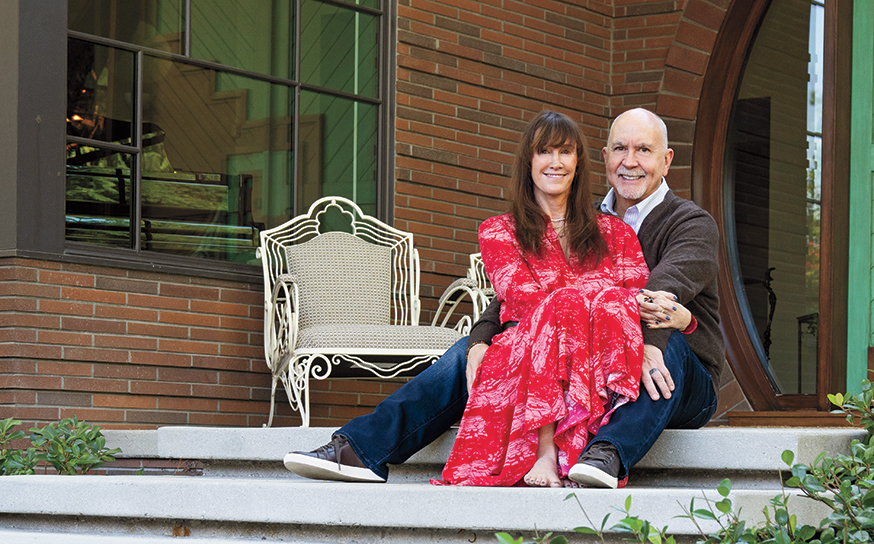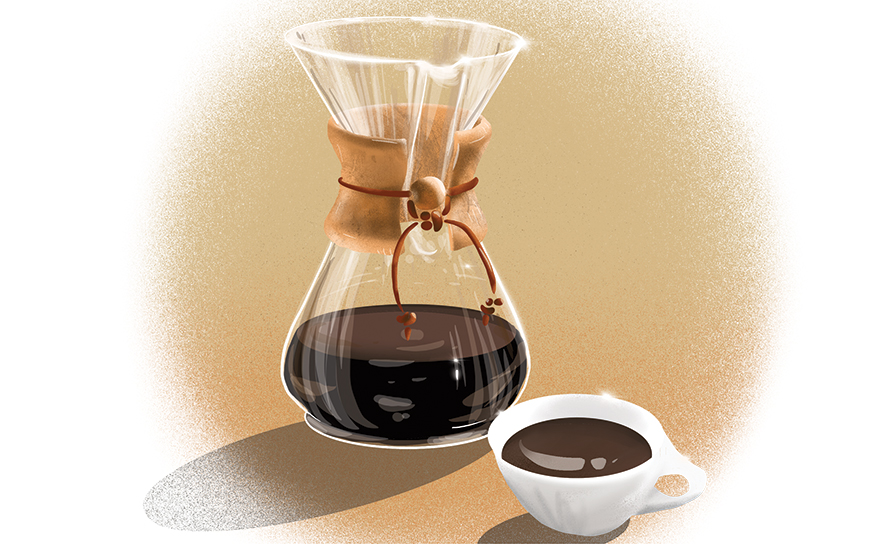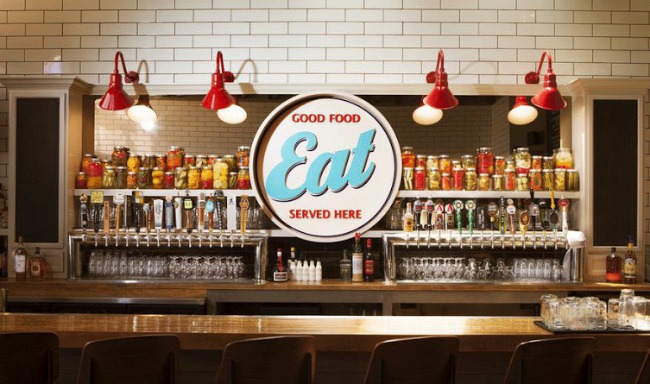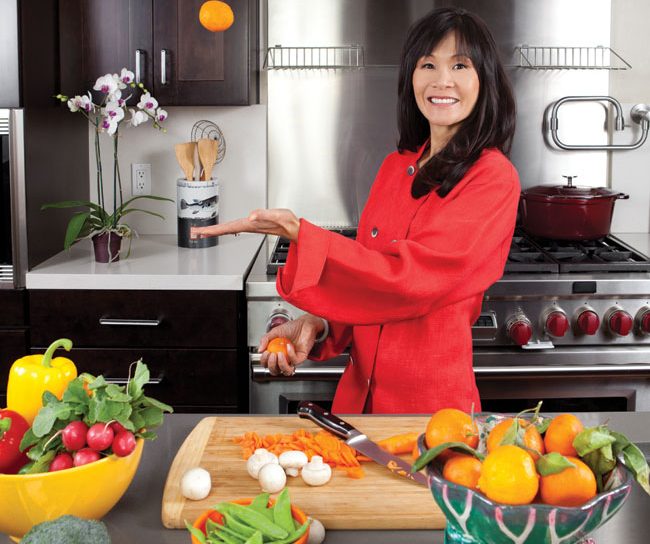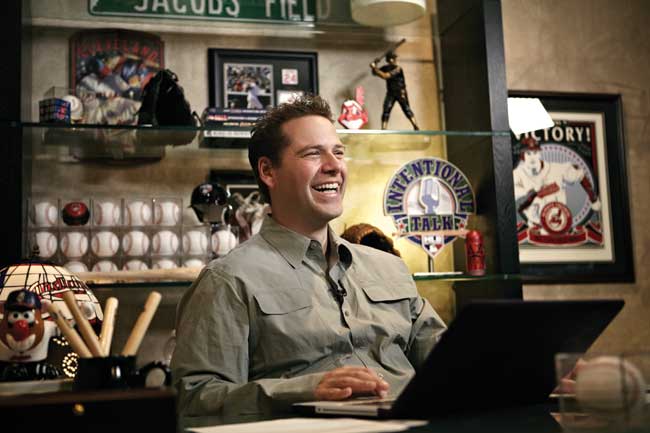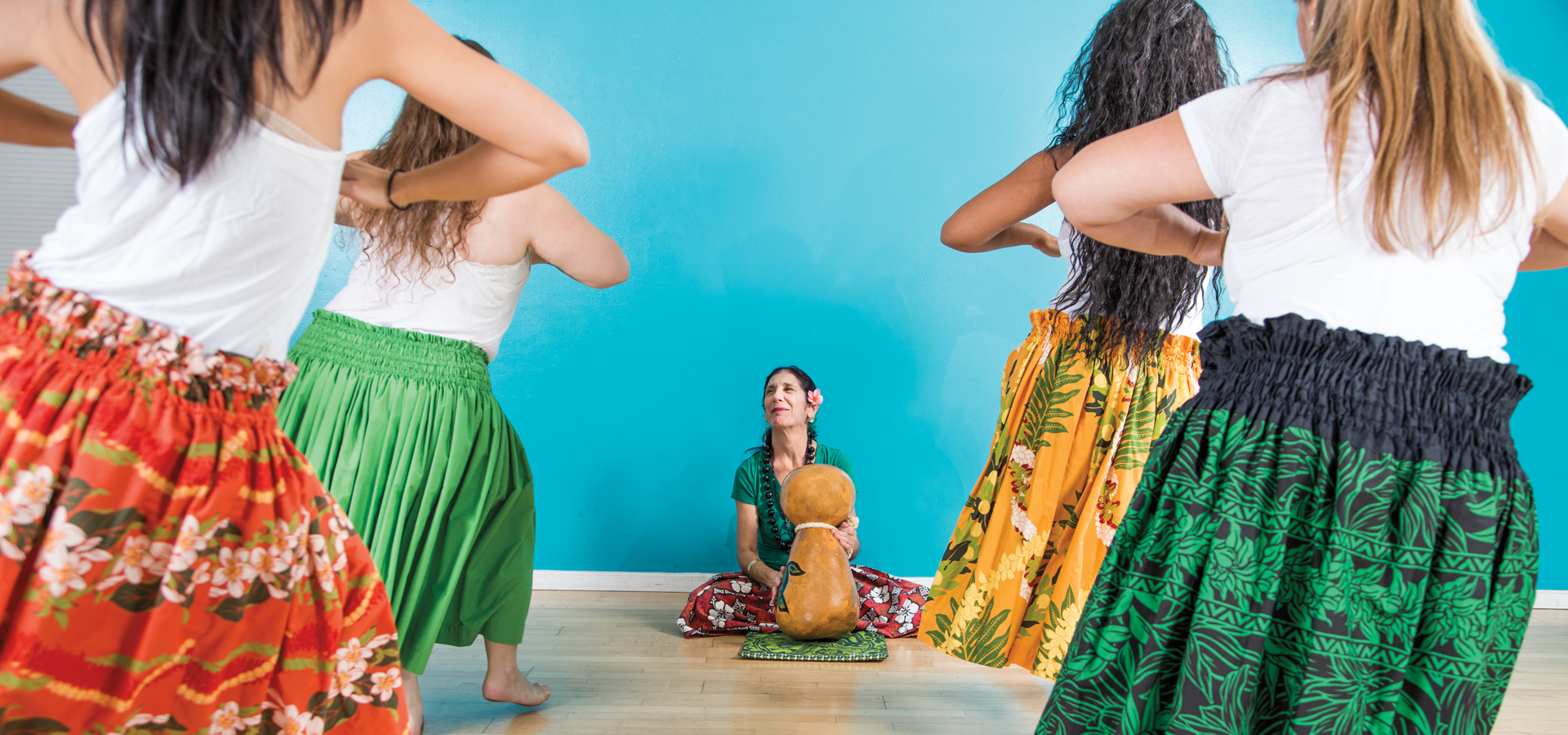
Hula schools in the Valley are teaching more than just dance
At local hula schools, dancers of all backgrounds find their footing, a dose of island culture and sometimes even a second family.
-
CategoryPeople, Social Scene
-
Written byRachel Heller Zaimont
-
Photographed byShane O’Donnell
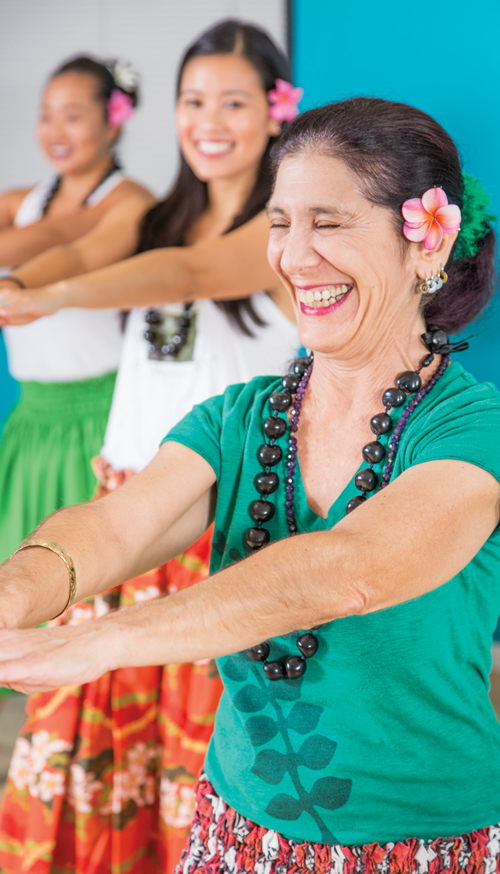 Stacey Urauchi’s childhood memories revolve around hula. She recalls learning the movements at the Bay Area halau (Hawaiian for “school”) where she began dancing at age 3 and by watching her mother and sister dance competitively.
Stacey Urauchi’s childhood memories revolve around hula. She recalls learning the movements at the Bay Area halau (Hawaiian for “school”) where she began dancing at age 3 and by watching her mother and sister dance competitively.
She loved to listen as her father, who was born in Molokai, kept time on the drum during class.
So when Stacey moved to LA, and into a high-stress job teaching sex education and substance abuse classes in county jails, she found herself yearning for the joyful hula experience of her youth.
“I knew I would need a form of stress relief with the job I was in,” says Stacey, 23, with a laugh. “With hula I could do something expressive, go back to being part of a community, do some self-care and reconnect with my roots.”
Stacey is one of hundreds of students enrolled at a halau in the Valley, which boasts a thriving hula scene that rivals other LA enclaves in size and spirit. From Northridge to Van Nuys, students of all walks of life are learning the steps to this ancient dance—also getting a window into the culture, language, music and spirit of Hawai’i.
Some elements of hula are recognizable in the mainstream: the pa’u (flowing, calf-length skirt), pua (flower worn in the hair) and floral lei (garland) are customary components of hula dancers’ garb. But students who sign up for classes quickly learn that hula is about more than attire, footwork and form.
“People come looking for a place to express themselves and learn the dance, and they fall in love with the culture. It becomes a much bigger world than they realized,” says Kumu Hula Jannie Ka’ohinani L. Nance, who runs Halau Hula O Uluwehilaukoa in North Hollywood, where Stacey is a student.
On a recent Thursday night, five female students, dressed in pa’u and T-shirts, line up at the entrance. In unison, they chant a request to enter the class, a sacred space, and Kumu Ka’ohinani chants back, granting permission. Warm-up stretches follow, and then the women practice their steps. Kumu Ka’ohinani deftly taps out a rhythm on the ipu heke, the traditional gourd drum, giving pointers as her students dance. “Push your hips!” she calls out at one point. “I want to see those skirts pop!”
Across the Valley in Granada Hills, a Tuesday night hula class at Aloha Hula Dance Studio finds students practicing basic conversational Hawaiian with head instructor Lyn-Del Laua’e Pedersen. Many of the attendees, ranging in age from teens to sixtysomethings, smile as they perform the graceful, undulating movements.
“When I’m feeling down or going through personal trials, I can always turn to hula to lift my mood and put me in a better place of gratitude and joy.”
Lyn-Del opened Aloha Hula in 2007 and now teaches hula and Ori Tahiti (Tahitian dance) to about 200 students. She aims to give students “a deeper understanding and appreciation of the Polynesian culture, the origins and traditions taught through song and dance. Along with that, we try to inspire confidence, reiterate the importance of respect and kindness, and to always remain humble.”
These values resonate with Kahiau Clarke, 47, of Granada Hills, who has been dancing at Aloha Hula for 10 years. “Everything about hula, you can apply to the rest of your life: kindness, humility, patience, being part of something bigger than yourself,” she says.
Some students take lessons to get in touch with their Hawaiian backgrounds. “It’s a dying art,” says Cheyenne Muscovich, 25, who attends class at Halau Hula O Uluwehilaukoa. “I feel like it’s my responsibility to keep it around and continue the ways of my ancestors.”
Others have no family connection to Hawai’i—they are simply drawn to the dance for its aesthetic beauty and uplifting spirit.
“I came to it by soul,” says Vanessa Davie of Northridge. “When I’m feeling down or going through personal trials, I can always turn to hula to lift my mood and put me in a better place of gratitude and joy.”
Serenity aside, the dance is also a workout. With its reliance on thigh and core strength, hula is just as likely to raise your heart rate as your spirits. According to Sydni Martin, 22, “It’s like having a social club, a workout, a family and therapy all in one.”





